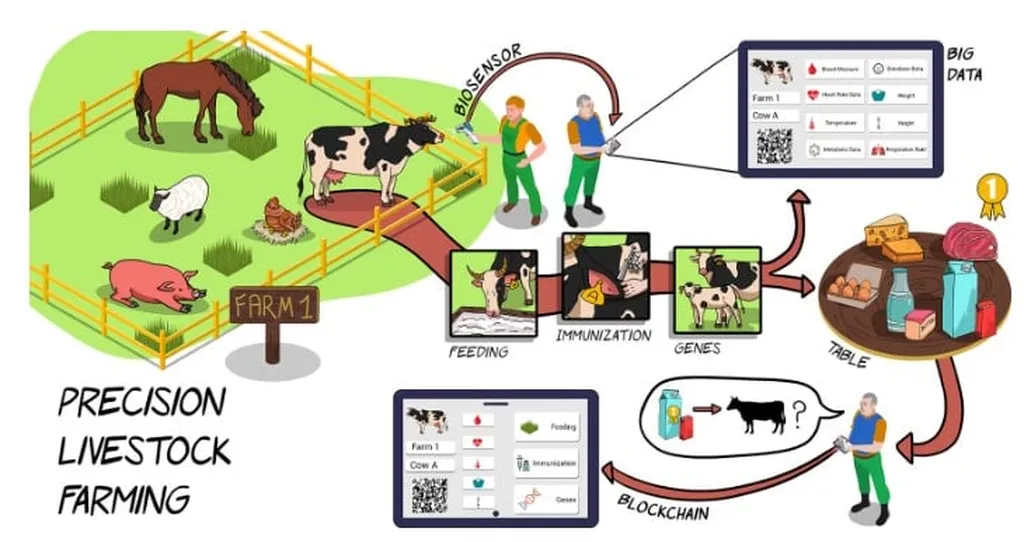In the rapidly evolving landscape of agricultural technology, a groundbreaking study published in *IEEE Access* is shedding light on the factors that drive farmers and agricultural stakeholders to adopt AI-driven livestock recognition systems. These systems, which use advanced biometric technologies like facial recognition to identify livestock, are poised to revolutionize transparency and trust in Government-to-Business (G2B) transactions. The research, led by Aigul Meirmanova of the Department of Computer Engineering at Astana IT University in Kazakhstan, integrates the Technology Acceptance Model (TAM) and the Unified Theory of Acceptance and Use of Technology (UTAUT) to explore the psychological, technological, and organizational factors influencing adoption.
The study, which surveyed 259 respondents across various sectors of agriculture in Kazakhstan, revealed that factors such as the efficiency of image detection, facilitating conditions, IT literacy, and the intention to mitigate fraud significantly influence the adoption of AI systems. “Our findings indicate that these systems are not just about technological advancement; they are about building trust and efficiency in agricultural transactions,” Meirmanova explained. The model developed by the researchers accounted for 70.1% and 57.2% of the variance in key dependent variables, demonstrating robust explanatory power.
The implications for the agriculture sector are profound. AI-driven livestock recognition systems can streamline processes, reduce fraud, and enhance transparency, ultimately leading to more efficient and trustworthy transactions. For policymakers and AI system developers, the study offers actionable insights to promote the adoption of these technologies in developing IT economies. “This research provides a roadmap for stakeholders to understand the critical factors that drive adoption and to develop strategies that address these factors effectively,” Meirmanova added.
As the agriculture sector continues to embrace digital transformation, the findings of this study could shape the future of livestock management. By understanding the factors that influence adoption, stakeholders can work towards creating more robust, efficient, and fraud-resistant systems. The integration of AI in agriculture is not just a technological leap; it is a step towards building a more transparent and trustworthy agricultural ecosystem.

